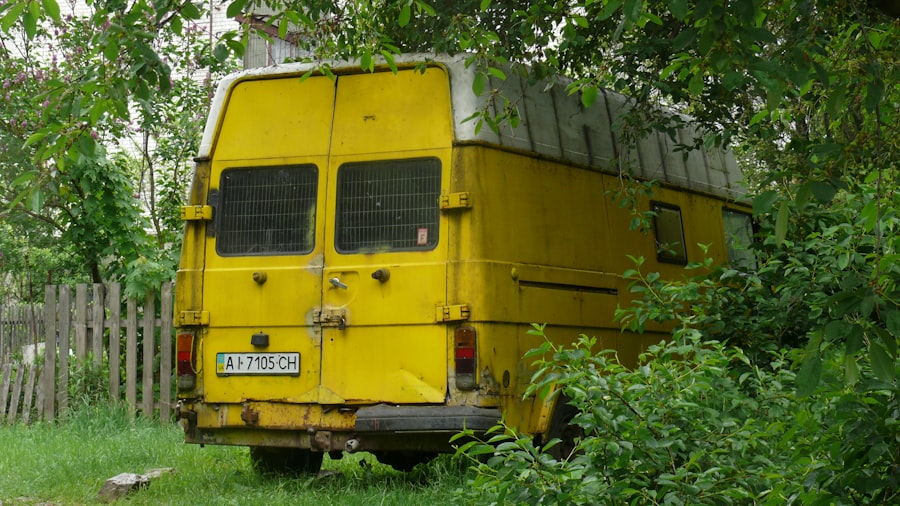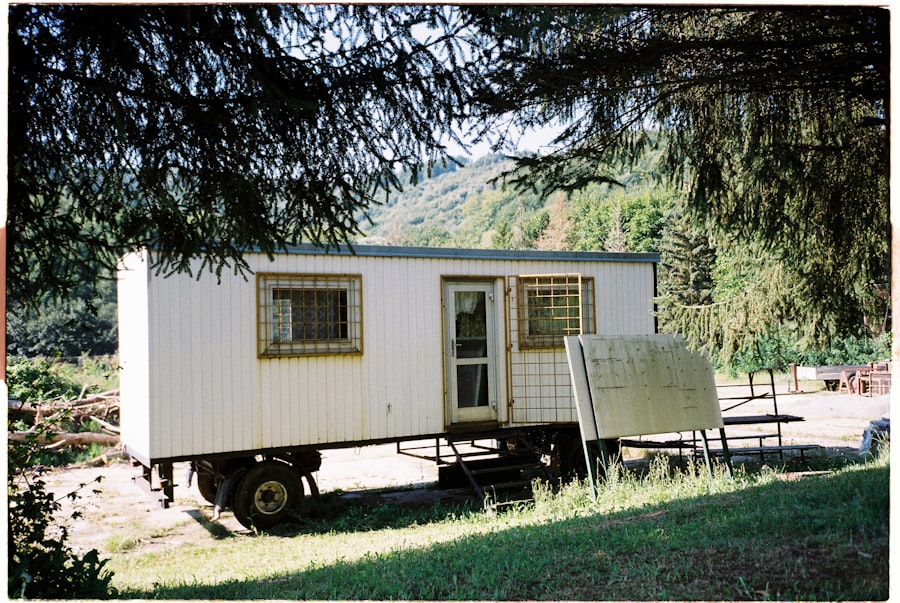The history of manufactured mobile homes is a fascinating journey that reflects broader trends in American society, economics, and technology. The concept of mobile living can be traced back to the early 20th century when the first travel trailers were introduced. These early models were often simple and rudimentary, designed primarily for camping and travel rather than permanent living.
However, the post-World War II era marked a significant turning point. As returning soldiers sought affordable housing options, the demand for more permanent mobile living solutions surged. In 1948, the first mobile home was produced by the Cavalier Manufacturing Company, which set the stage for a new industry.
By the 1960s, mobile homes had evolved significantly, both in design and construction. The introduction of the Mobile Home Construction and Safety Standards in 1976 established regulations that improved safety and quality. This legislation marked a pivotal moment in the industry, as it ensured that manufactured homes met specific building codes and standards.
The term “manufactured home” began to replace “mobile home,” reflecting a shift towards more permanent structures that could be placed on a foundation. This change not only enhanced the reputation of manufactured homes but also expanded their appeal to a broader demographic, including families and retirees seeking affordable housing options.
Key Takeaways
- Manufactured mobile homes have a long history dating back to the early 20th century, evolving from travel trailers to modern, affordable housing options.
- Living in a manufactured mobile home offers benefits such as affordability, flexibility, and the opportunity to live in a close-knit community.
- Choosing a manufactured mobile home can result in significant cost savings compared to traditional housing options, making it an attractive choice for many individuals and families.
- Modern manufactured mobile homes come with a range of features and amenities, including energy-efficient appliances, spacious layouts, and customizable options.
- Manufactured mobile homes have a smaller environmental impact compared to traditional homes, with a focus on energy efficiency and sustainable building practices.
The Benefits of Living in a Manufactured Mobile Home
Living in a manufactured mobile home offers numerous benefits that appeal to a wide range of individuals and families. One of the most significant advantages is affordability. Manufactured homes typically cost less per square foot than traditional site-built homes, making them an attractive option for first-time homebuyers or those looking to downsize.
This affordability extends beyond the initial purchase price; lower utility costs and reduced maintenance expenses contribute to long-term savings. Many manufactured homes are designed with energy efficiency in mind, incorporating modern insulation techniques and energy-efficient appliances that help reduce monthly bills. Another benefit of manufactured homes is their flexibility in terms of location and lifestyle.
Many manufactured home communities offer a sense of camaraderie and belonging, fostering a close-knit environment where residents can form lasting friendships. These communities often provide amenities such as swimming pools, clubhouses, and recreational facilities, enhancing the overall quality of life for residents. Additionally, manufactured homes can be placed in various settings, from rural areas to urban developments, allowing individuals to choose a location that best suits their lifestyle preferences.
The Cost Savings of Choosing a Manufactured Mobile Home

Cost savings are one of the primary reasons many individuals opt for manufactured mobile homes over traditional housing options. The initial purchase price of a manufactured home is generally lower than that of a conventional home, making it an accessible choice for those on a budget. According to the U.S. Census Bureau, the average cost of a new manufactured home is significantly less than that of a new single-family site-built home. This price difference can be particularly advantageous for young families or retirees looking to downsize without sacrificing quality of life. In addition to lower purchase prices, manufactured homes often come with reduced ongoing costs. Many models are built with energy efficiency in mind, featuring high-quality insulation and energy-efficient windows that help keep heating and cooling costs down. Homeowners can also save on property taxes, as manufactured homes are often assessed at a lower rate than traditional homes. Furthermore, maintenance costs tend to be lower due to the modern materials and construction techniques used in manufactured homes, which can lead to fewer repairs and replacements over time.
The Modern Features and Amenities of Manufactured Mobile Homes
| Feature/Amenity | Description |
|---|---|
| Open Floor Plans | Modern manufactured homes often feature spacious open floor plans for a more contemporary living experience. |
| Energy-Efficient Appliances | Manufactured homes are equipped with energy-efficient appliances to reduce utility costs and environmental impact. |
| High Ceilings | Many modern manufactured homes have high ceilings to create a sense of openness and spaciousness. |
| Smart Home Technology | Some manufactured homes come with smart home features such as thermostats, lighting, and security systems. |
| Modern Kitchen Designs | Manufactured homes often include modern kitchen designs with updated cabinetry, countertops, and fixtures. |
| Spa-Like Bathrooms | Many manufactured homes feature spa-like bathrooms with luxurious amenities such as soaking tubs and walk-in showers. |
| Customization Options | Buyers can often customize their manufactured homes with various options for finishes, flooring, and other features. |
Modern manufactured homes have come a long way from their early predecessors, incorporating a wide array of features and amenities that rival those found in traditional homes. Today’s manufactured homes are designed with open floor plans, spacious kitchens, and contemporary finishes that appeal to modern tastes. Many models come equipped with high-end appliances, stylish cabinetry, and luxurious countertops, creating an inviting atmosphere for both residents and guests.
In addition to aesthetic upgrades, many manufactured homes now include smart home technology as standard or optional features. Homeowners can enjoy the convenience of smart thermostats, security systems, and lighting controls that can be managed remotely via smartphones or tablets. This integration of technology not only enhances comfort but also contributes to energy efficiency by allowing homeowners to monitor and adjust their energy usage in real-time.
As manufacturers continue to innovate, the range of available features will likely expand even further, making manufactured homes an increasingly attractive option for prospective buyers.
The Environmental Impact of Manufactured Mobile Homes
The environmental impact of manufactured mobile homes is an important consideration in today’s eco-conscious society. One of the key advantages of these homes is their potential for reduced environmental footprints compared to traditional site-built homes. The manufacturing process for mobile homes typically generates less waste than conventional construction methods, as components are often prefabricated in factories before being transported to the site for assembly.
This streamlined process minimizes material waste and reduces the overall environmental impact associated with construction. Moreover, many modern manufactured homes are designed with sustainability in mind. Builders are increasingly incorporating eco-friendly materials and energy-efficient technologies into their designs.
For instance, some manufacturers use recycled materials in construction or install solar panels as an option for homeowners looking to reduce their reliance on fossil fuels. Additionally, energy-efficient appliances and insulation help minimize energy consumption over the life of the home, further contributing to its sustainability profile. As awareness of environmental issues continues to grow, the manufactured housing industry is likely to embrace even more sustainable practices.
The Community and Lifestyle of Manufactured Mobile Home Parks

Living in a manufactured mobile home park offers a unique community experience that many residents find appealing. These parks often foster a sense of belonging among residents, creating opportunities for social interaction and support networks. Many parks organize community events such as potlucks, holiday celebrations, and recreational activities that encourage residents to connect with one another.
This sense of community can be particularly beneficial for individuals who may feel isolated or lonely in traditional housing settings. The lifestyle within manufactured home parks can also be more relaxed compared to other residential environments. Many parks are located in serene settings with access to nature trails, lakes, or recreational areas, allowing residents to enjoy outdoor activities without having to travel far from home.
Additionally, the amenities offered by many parks—such as swimming pools, fitness centers, and clubhouses—provide residents with opportunities for leisure and recreation right at their doorstep. This combination of community engagement and access to amenities contributes to an overall quality of life that many find appealing.
The Financing and Ownership Options for Manufactured Mobile Homes
Financing options for manufactured mobile homes have evolved significantly over the years, making it easier for prospective buyers to secure loans and purchase their dream homes. Traditional mortgage lenders may offer financing for manufactured homes that meet specific criteria, such as being permanently affixed to a foundation and meeting local building codes. Additionally, specialized lenders focus exclusively on manufactured housing financing, providing tailored loan products that cater to this market segment.
Ownership options also vary widely for manufactured homes. Buyers can choose to purchase their home outright or finance it through loans that may include land ownership or lot rental agreements within a mobile home park. Some individuals opt for purchasing land alongside their manufactured home, allowing them greater control over their property and potential appreciation in value over time.
Others may prefer the flexibility of renting a lot within a community, which can reduce maintenance responsibilities while still providing access to amenities and social opportunities.
The Future of Manufactured Mobile Homes in the Affordable Housing Market
As housing affordability continues to be a pressing issue across the United States, manufactured mobile homes are poised to play an increasingly vital role in addressing this challenge. With rising home prices and stagnant wages making traditional homeownership unattainable for many individuals and families, manufactured homes offer an accessible alternative that can help bridge the gap between affordability and quality living conditions. The future of manufactured housing will likely see continued innovation in design and construction techniques aimed at enhancing quality while maintaining affordability.
As technology advances, manufacturers may incorporate even more sustainable practices into their production processes, further appealing to environmentally conscious consumers. Additionally, as urban areas grapple with housing shortages, zoning regulations may evolve to allow for greater integration of manufactured homes into diverse neighborhoods, promoting inclusivity and diversity within communities. In conclusion, the landscape of manufactured mobile homes is evolving rapidly in response to changing societal needs and preferences.
With their affordability, modern features, community-oriented lifestyle options, and potential environmental benefits, manufactured homes are well-positioned to become an integral part of the solution to America’s affordable housing crisis in the years ahead.

